Root Canal Treatment Problems
Machine translation
Original article is written in RU language (link to read it).
Proper processing and formation of the root canal is an important part of endodontic treatment. For many years, these stages were performed using manual tools. However, nowadays, machine processing of root canals with NiTi tools is increasingly used. Thanks to the flexibility of these tools, using the Crown Down technique can significantly reduce the working time in the channels.
About a simple way to navigate the MB2 canal in one of the webinars of the course Endodontics from A to Z with Dmitry Nikolaev=.
Recently, another technique for processing channels was proposed, which was based on the use of reciprocating movements in the channel instead of full rotation.
Numerous studies have already confirmed the validity of this technique.
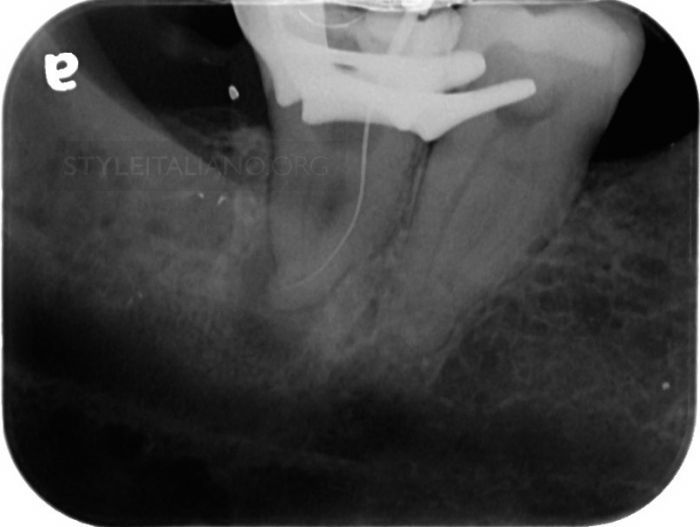
Figure 1. A common complication of canal treatment is the breakage of the instrument inside the canal.
When using NiTi instruments, it is necessary to work in a canal that is larger in diameter than the instrument itself. Also, the canal walls must be smooth. Only these conditions will help avoid breaking the instrument inside the canal. It is considered that initially, a K-file (15) should be used, followed by a K-file (20), and carefully navigate the root canal to its apex. Only then should machine tools be used. Knowing that there is a 50% increase between the 10 and 15 files, 30% between 15 and 20, and considering their stiffness, it can be concluded that processing curved and narrowed canals will encounter significant difficulties. Therefore, such a problem as the jamming of the instrument in the canal is primarily related to the design features of these instruments.
Replacing these stainless steel instruments came NiTi instruments, which can glide very smoothly in the canal. The first such instruments were the Pathfile system (Dentsply), which included three instruments (13.02, 16.02, and 19.02). Now other companies also offer such instruments:
- Dentsply Pathfiles 3 instruments;
- Micro Mega G-files 2 instruments;
- Morita EndoWave 3 instruments;
- FKG Scout-Race 3 instruments;
- SS White V Glide Pathfile 2 instruments;
- Clinic® ChoicetX-Plorer Series 3 instruments.
It has been proven that nickel-titanium instruments are safer and more effective than stainless steel instruments. However, it is still recommended to navigate the canal using a K-file (10) before starting machine processing. Thus, the main issue is navigating through a difficult canal.

Figure 2.

Figure 3. Initial processing with stainless steel tools.
Root canal treatment consists of three stages: initial processing, creating smooth walls, and finishing the canal. The initial processing of the canal is the most important and complex part of the entire process. Severely curved and narrowed canals sometimes cannot even be processed by an experienced doctor. During the processing, it is important to understand why the first file cannot pass through the entire length of the canal. There are four reasons for this.
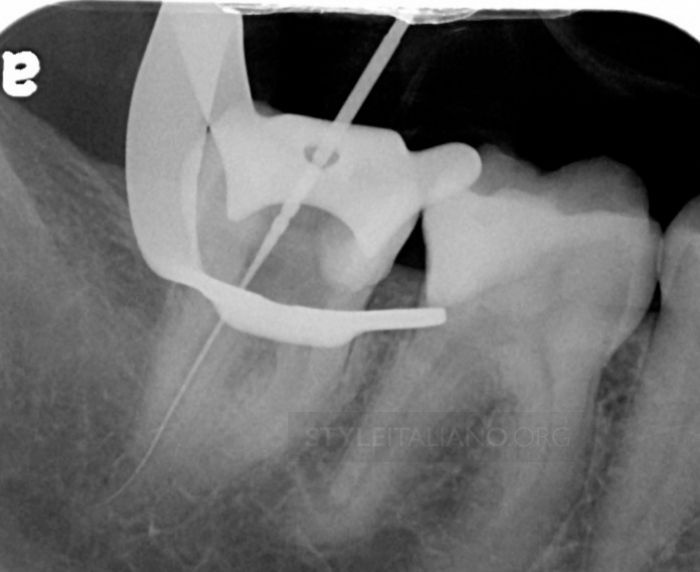
Figure 4.
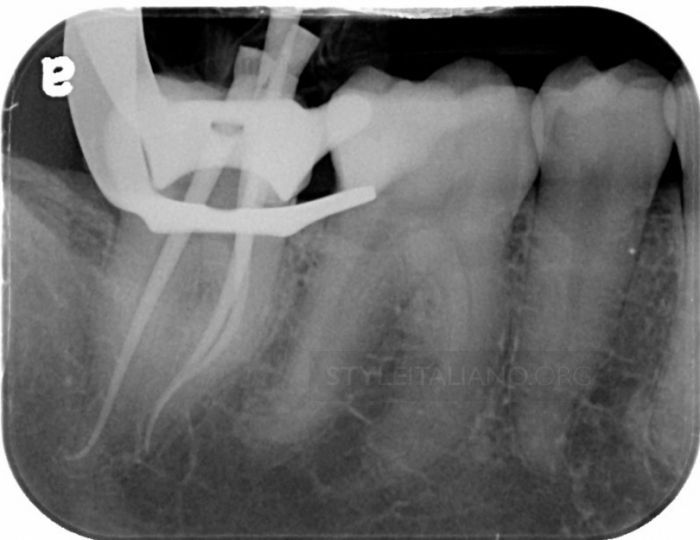
Figure 5.
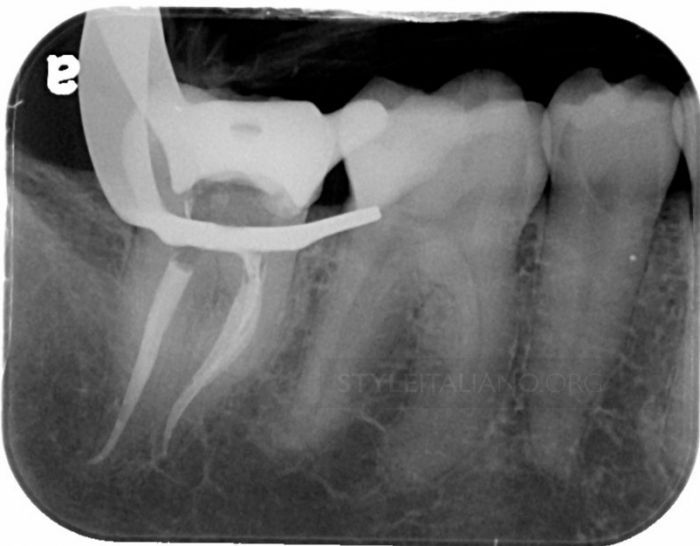
Figure 6. First – accumulation of infected dentin chips in the apical part of the canal. In such cases, it is best to use the smallest size tools. These tools enhance tactile control. Additionally, it is necessary to use a lubricant and sodium hypochlorite.
The first thing to do is to determine where in the canal the chips have accumulated. Then, it is necessary to move apically, using K-files 0.06 and 0.08. Using reciprocating movements, we carefully move in the apical direction. Intensively rinse with a sodium hypochlorite solution. It is necessary to regularly change the K-file for a new one, as it is very important to have a sharp tip of the tool. After managing to pass through the entire canal with a small tool, you can take a larger instrument, but then constantly re-pass the canal with the original file.
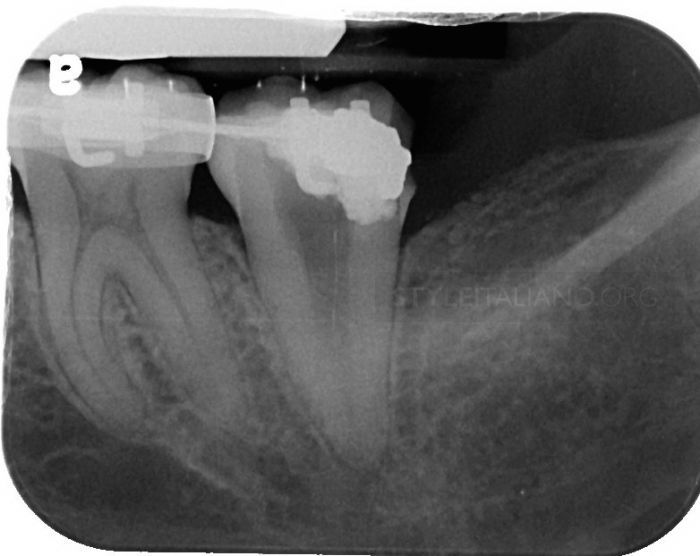
Figure 7. The second reason is the choice of a tool with a diameter larger than the cross-section of the channel. In this case, it is necessary to use a smaller-sized tool.
The third reason – when working with very curved channels, it is important to sufficiently bend the tool itself beforehand.
The fourth – creating a barrier of dentin chips in the apical part of the channel. In this case, it is necessary to thoroughly flush the channel and use small diameter tools with a sharp tip, working through the apical part.
At this stage, it is important for the dentist to have tactile control over the tool being used.
The first sliding movement is made with a K-file (08). As soon as resistance is encountered, the movement is made clockwise. Such movements help to clean the walls from infected dentin and organic residues. It is necessary to constantly flush the channel with sodium hypochlorite.
When reaching the apical foramen, only vertical movements with an amplitude of no more than 2 mm are allowed. Then the amplitude gradually increases to 4 mm.
In the case of excessively curved root canals, it is best to use the balanced force technique. Also, in this case, the use of Flexofile and Nitiflex is most relevant, as these tools provide us with the greatest safety and will allow us to pass through the entire apical third of the root.
During endodontic treatment, it is important not to forget about the safety of the procedures we perform. Therefore, there are a number of requirements that must be observed:
- It is necessary to track the path of the canal from the very orifice to the apex, regardless of whether the canal is curved, S-shaped, or very narrow.
- The first tool for treatment should be small in size, but at the same time flexible and strong enough not to break. In addition, the file should be sharp enough to cut off the remnants of infected tissues from the canal walls during work. Stainless steel files can be used for this purpose.
- One must not forget about the risk of perforating the root canal.
- The technique used by the doctor should be adapted to the fact that in the apical part of the canal, tools generally encounter resistance. Currently, the concept of studying the limit of endurance is most relevant, according to which tools with an endomotor can be used without the risk of the tool jamming in the canal. Thanks to this theory, it has been established that the tool can be used 106 times without the risk of breakage.
Currently, this technology is used with the application of a special motor and tools for processing.
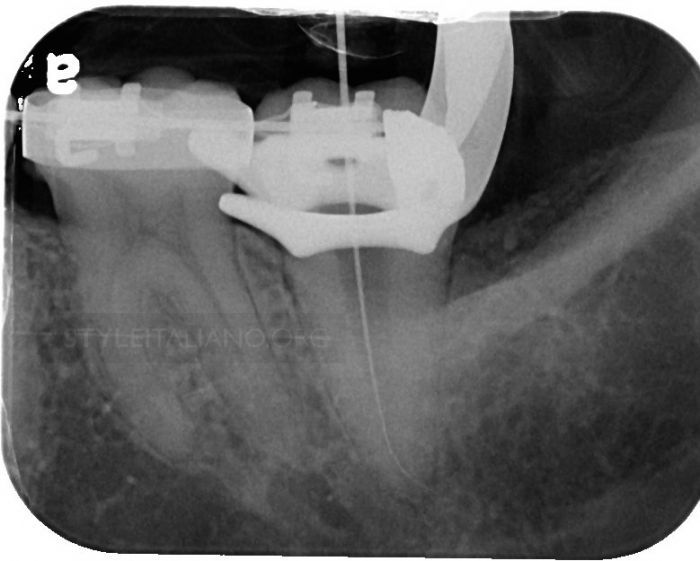
Figure 8.
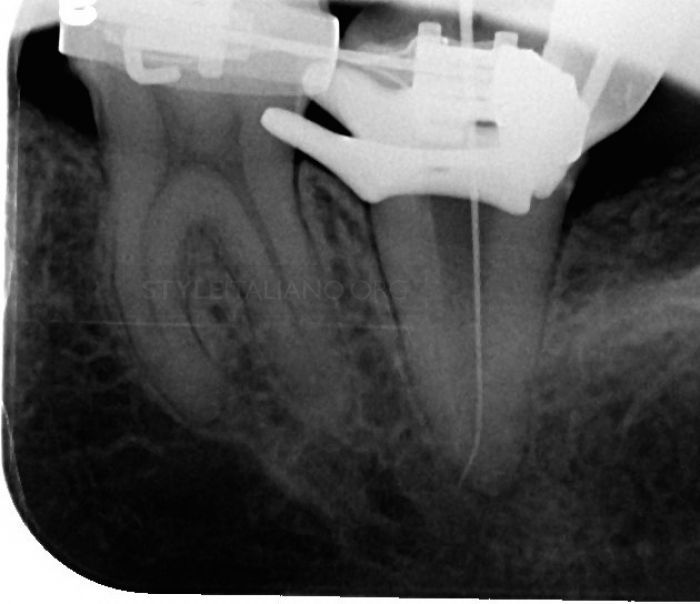
Figure 9.
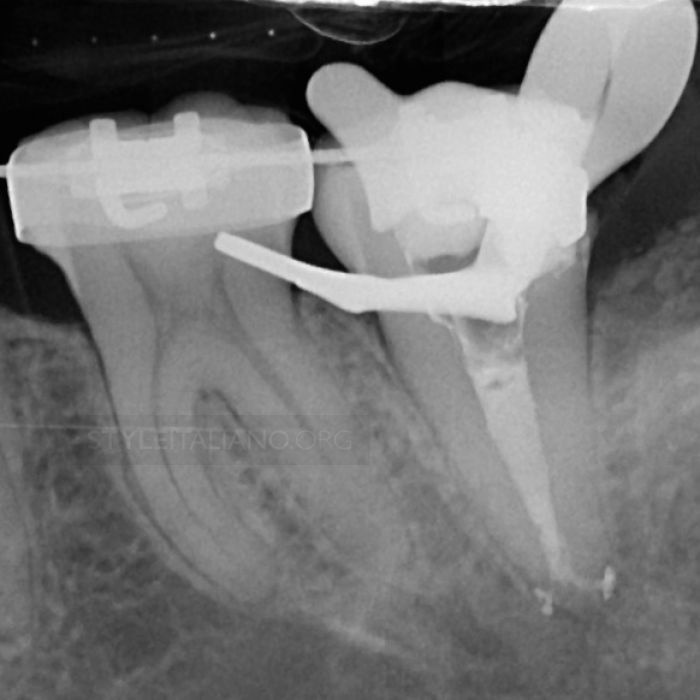
Figure 10.
Criteria for selecting nickel-titanium tools and clinical approaches to root canal instrumentation in the online lesson Technique of mechanical preparation of the root canal with a single file.
http://www.styleitaliano.org/


